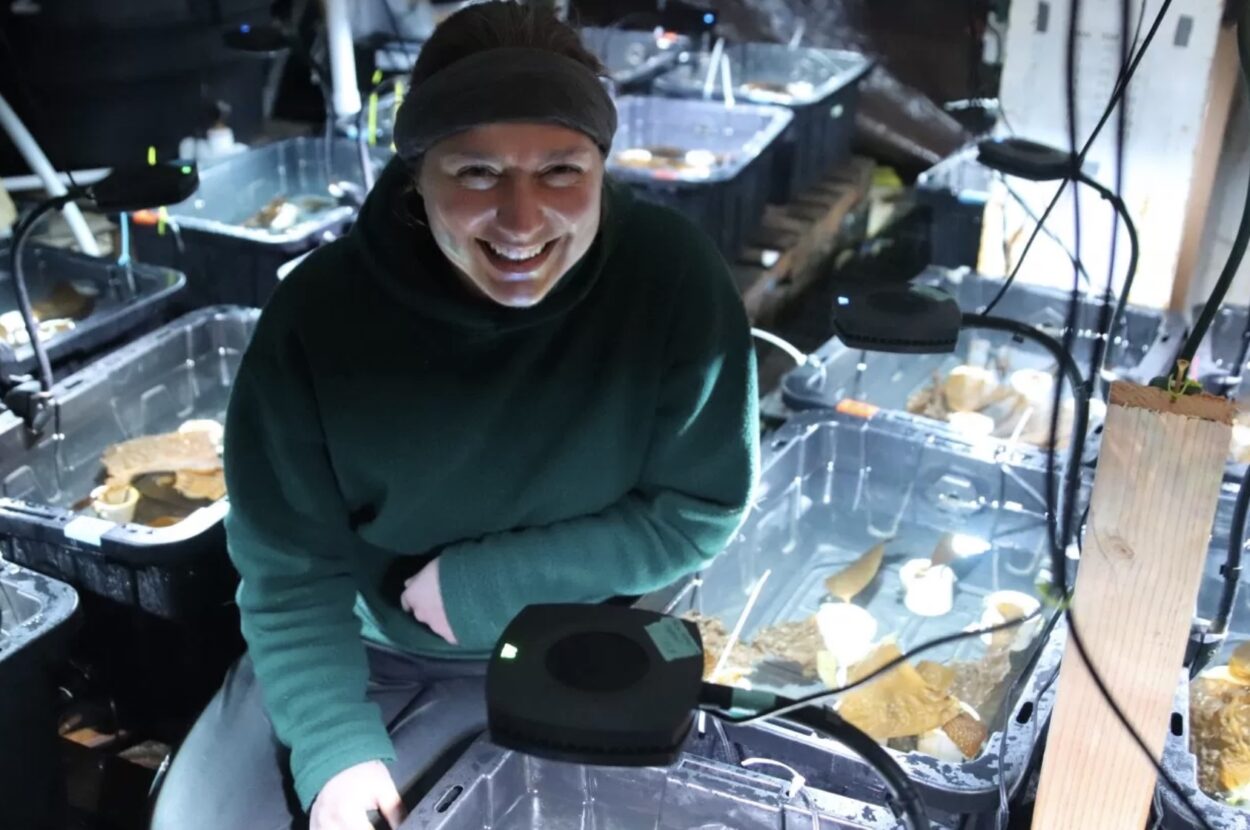
What will our oceans look like in a hundred years? A new study authored by a Sitka scientist could help scientists predict how these underwater ecosystems are likely to change – and why that matters for Alaskans on dry land.
Sitka scientist Lauren Bell, who authored the study, says kelp is a foundation for the rest of the marine ecosystem.
“I think the natural analogy for kelp is like the forest that we’re used to walking through on land,” Bell said. “And if you are lucky enough to swim in our coastal ocean and swim through a kelp forest, it might remind you of forest land. It’s an apt analogy, because [kelp forests] are really important habitat, and they are an incredible food supply for the animals that live with them.”
In a study published in the journal Ecosphere last month, Bell shared new research on what Alaska’s kelp forests might look like in a hundred years. Long-term changes to kelp forests – say, if the kelp grows more slowly, or is less tasty to the critters eating it– could have far-reaching effects on the ecosystem. Bell points to herring, which she has studied extensively, as one example.
“Seaweeds are a really important habitat for the early life stages of herring,” she said. “Herring are of course, a really important food for a lot of other animals like birds, bears, and whales. If [herring’s] early life stage habitat is disrupted and that impacts their ability to thrive and make it to adult stages, that could have direct effects on the rest of the food web, including humans, bears, deer, you know, all of these different animals that are connected in this ecosystem.”
To study how kelp might grow under future conditions, Bell chose three species – split, giant, and sieve kelp – and grew them in tanks, using hot tub heaters and bubblers to make the water warmer and more acidic. Bell says the kelps responded differently to changing conditions – while two species struggled to grow and absorb nutrients, one species, giant kelp, actually grew better under future ocean conditions. That sounds like good news, but it could make it hard for other kelp to thrive. Bell says these results help to reinforce a bigger picture about the future of our oceans.
“The minutiae of this particular study is less important than the fact that it’s adding to this now growing volume of research that’s supporting the fact that especially here in Alaska, our oceans are changing, and they’re changing fast,” she said.
Bell says that change matters for coastal Alaskans – from subsistence harvesters and mariculture moguls to fishermen.
“It has implications for our economy that depends on ocean resources — from individual people’s paychecks that are involved in fisheries or ocean industries to the burgeoning marine mariculture industry,” she said. “A lot of our livelihood and well-being is connected to the ocean in this state.”






























